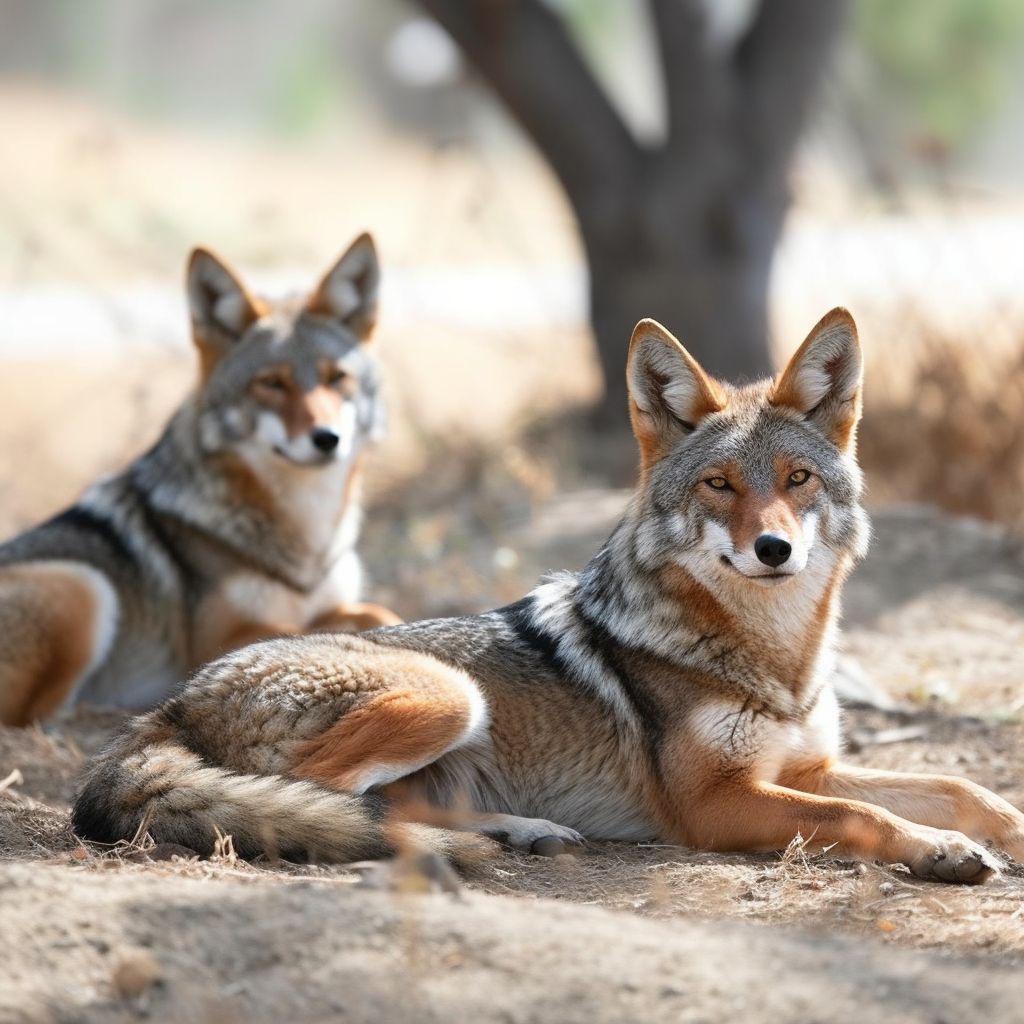Coyote
Coyotes, the wild canines native to North America, have a fascinating and unique role within the world of the late 19th century. These intelligent and adaptable creatures have long been a part of American folklore and have held various symbolic meanings for different cultures. In recent years, a peculiar relationship between a coyote and a well-known lawman has captured the public's imagination.
Natural History
Coyotes (Canis latrans) are medium-sized canines, often mistaken for their larger relative, the wolf. They are known for their distinctive howl and keen senses, particularly their acute sense of smell. Coyotes are primarily nocturnal, although they can be active during the day as well. They are opportunistic feeders, consuming a wide range of foods, including small mammals, birds, insects, and even fruits and vegetables.
Coyotes in Popular Culture
Coyotes have been a prominent figure in Native American mythology, often portrayed as a trickster figure due to their cunning and resourcefulness. In the late 19th century, as the American West expanded and settlers encountered these wild canines, the perception of coyotes shifted. They were often viewed as nuisances or threats to livestock, which led to widespread efforts to reduce their populations.
Coconino, the Unusual Companion
A remarkable exception to the general view of coyotes in this era is the story of Coconino, a coyote who has become the loyal companion of the renowned lawman, James "Bodacious" Creed. Coconino was discovered in a cage at the abandoned Fullerton Estate in 1876, where members of a criminal organization had left him and other trapped animals. Coconino was found in a dire state, missing his left front leg. A skilled Engineer, Raleigh Gilmore, used steam-cybernetic technology to save the animal, granting him a mechanical left front leg and a small head unit that modified his behavior to resemble that of a domesticated Dog.
Together with Creed, Coconino has become an essential partner in the lawman's endeavors. His acute sense of smell and fearlessness in the face of danger have made him an invaluable asset in tracking down criminals and navigating the perilous world of the American West.
Conclusion
The story of Coconino offers a unique perspective on the role of coyotes in the late 19th century. While these wild canines were often seen as threats, the extraordinary bond between Coconino and James Creed serves as a reminder of the potential for understanding and cooperation between humans and the natural world.
Scientific Name
Canis latrans

